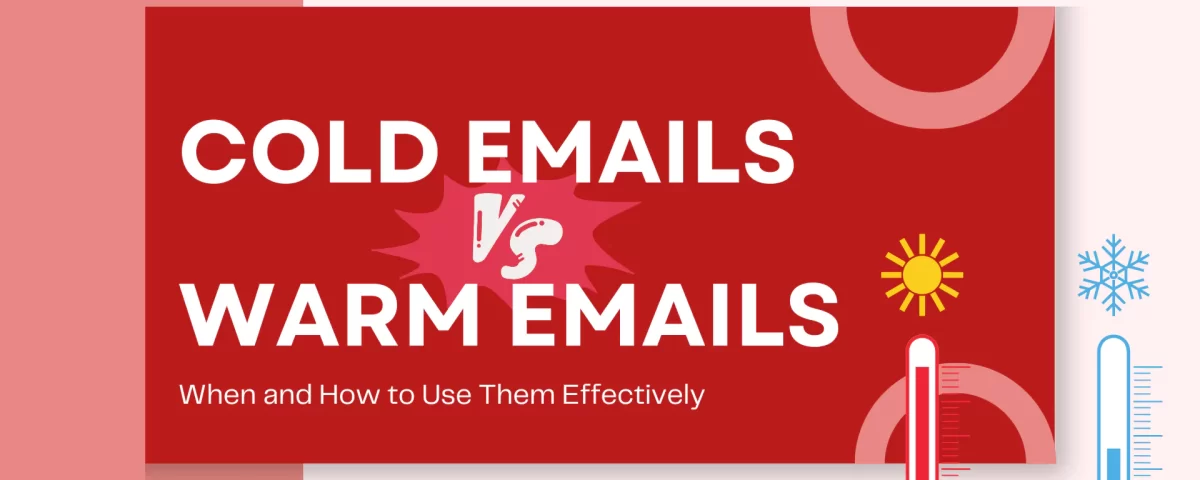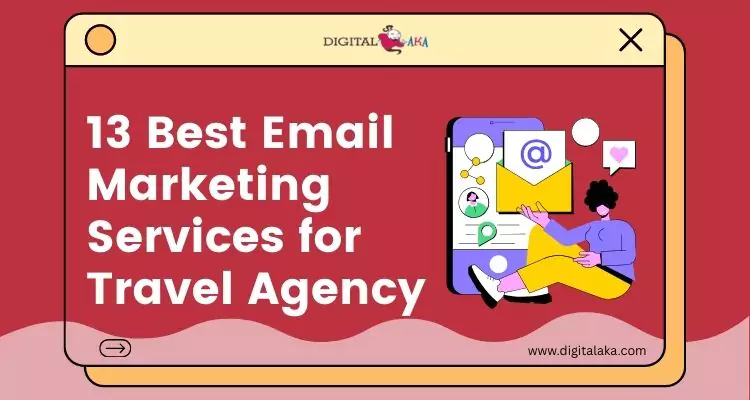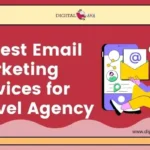
Best 13 Email Marketing Services for Travel Agency Success
May 2, 2025Are you confused about when to send cold emails vs warm emails? Don’t worry, you’re not alone. Many people mix up these two types of emails, but they are very different and serve different goals. A cold email is like starting a conversation with someone you’ve never met, while a warm email is more like continuing a chat with someone you already know. Both can be highly effective when used correctly.
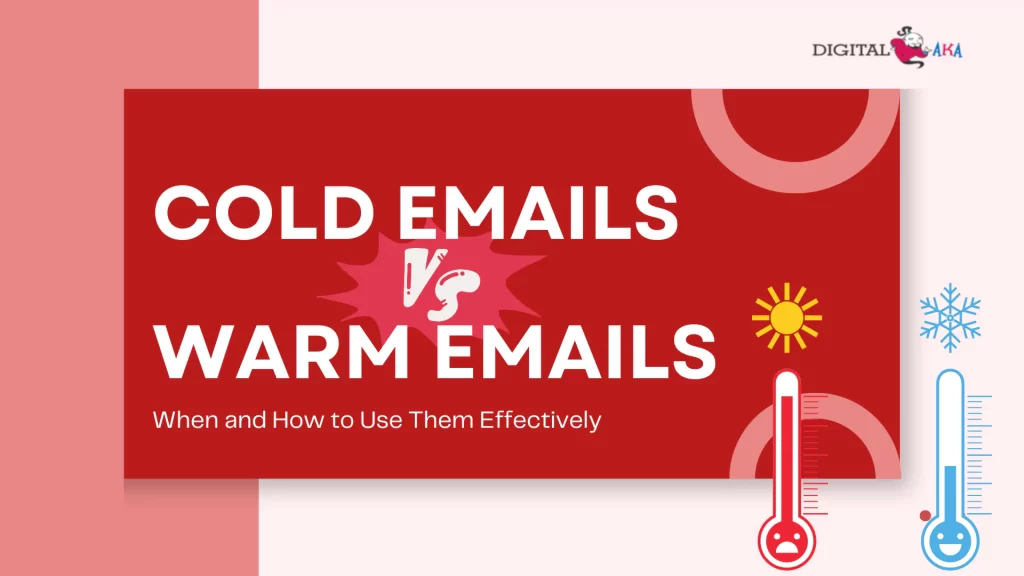
If you’re using Email Marketing Services, this is an important topic to understand. In this blog, we’ll explain what Cold emails vs Warm emails are, how they work, and when to use each one. Whether you’re trying to reach new clients or follow up with contacts, knowing the difference can help you get better results. We’ll also share simple tips to make your emails more effective and increase your chances of getting replies. So, let’s get started and learn the smart way to use cold and warm emails!
Table of Contents
What Are Cold Emails?
Cold emails are powerful messages sent to people you don’t know yet. They are your first step to start a conversation with a potential client, partner, or lead. Think of a cold email as your first digital handshake, it introduces you and your services strongly and professionally.
The goal of a cold email is to grab attention, build interest, and create opportunities. It’s not just a random message. A well-written cold email speaks directly to the reader’s needs, shows value, and gives a reason to reply.
If done right, cold emails can open doors to big deals, grow your network, and boost your business. Many great sales and business partnerships begin with a single cold email. So, if you want to reach new people, pitch your service, or grow faster, cold emails are your smart, cost-effective tool to start strong.
What Are Warm Emails?
Warm emails are messages sent to people who are already familiar with you or your business. These could be past clients, leads who showed interest, or someone you met through networking. Unlike cold emails, warm emails feel more personal and trusted because there’s already a connection.
Warm emails work better because they are built on some level of trust. People are more likely to open them, read the content, and respond. You’re not starting fresh, you’re continuing a relationship that’s already been built.
These emails are great for follow-ups, special offers, product updates, or checking in. You can use warm emails to boost sales, build loyalty, or close a deal faster.
Want to get more replies and grow your business? Then warm emails are your golden ticket. Keep your message warm, simple, and centered on the value you offer. When done right, warm emails can turn interest into action and leads into loyal customers.
Differences Between Cold and Warm Emails
Before using any Email Marketing Services, understanding the difference between cold and warm emails is key to writing better messages and getting real results. Here’s a simple breakdown of how they differ and why it matters for your business success:
1. Who are you Emailing
- Cold Email: Sent to a person you have had no prior contact with. They don’t know you.
- Warm Email: Sent to someone who knows you, has visited your website, or interacted with your brand before.
2. Purpose
- Cold Email: Great for reaching new leads, pitching your services, or starting fresh conversations.
- Warm Email: Perfect for nurturing existing contacts, offering deals, or following up.
3. Tone and Style
- Cold Email: Needs to grab attention fast. Be bold, clear, and direct.
- Warm Email: Can be friendly and personal. You already have some trust.
4. Response Rate
- Cold Email: Lower response rate, but powerful when done right. A powerful subject line and a clear call-to-action are essential for success.
- Warm Email: Higher response rate because there’s already a connection.
5. Trust Level
- Cold Email: You’re building trust from zero. Your offer should provide a clear solution to a real problem.
- Warm Email: Trust is already there. You can focus on converting or upselling.
Benefits of Cold Emails vs Warm Emails
Both cold and warm emails play a powerful role. But knowing when to use each can help you get better responses, close more deals, and grow your business faster. Let’s break down the benefits of cold emails vs warm emails so you can choose the best strategy for your goals.
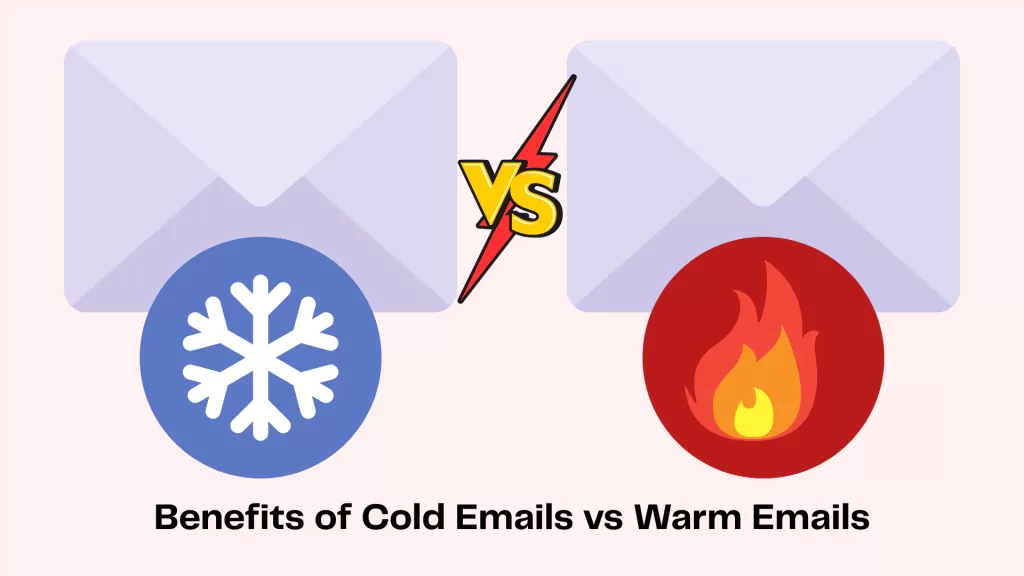
Let’s now compare their benefits side by side:
Feature | Cold Emails | Warm Emails |
| Reach New Customers | Ideal for discovering new leads and growth opportunities. | Not ideal for new outreach. |
| Fast Lead Generation | Start conversations with high-potential prospects quickly. | Works best for nurturing existing leads. |
| Scalable Campaigns | Simple to send to hundreds or even thousands in one go. | Typically sent in smaller batches with a more personalized approach. |
| Brand Awareness | Introduces your product/service to fresh audiences. | Reinforces your brand to existing contacts. |
| Cost-Effective | A low-cost way to build new connections and grow fast. | Cost-effective, but better for long-term engagement. |
| High Conversion (if done right) | Personalized cold emails can drive strong results. | Warm emails usually get better open and reply rates. |
| Perfect for Sales Outreach | Excellent tool for sales teams to book meetings and demos. | Ideal for follow-ups, cross-selling, or upselling. |
Cold emails are a powerful and effective method to expand your network and attract new clients. Warm emails help you build trust and close deals faster. Use them both smartly, and your email strategy will become a winning machine.
When to Choose Cold Emails vs Warm Emails
Emails are powerful tools in marketing and sales. But not all emails are the same. Knowing when to use cold emails vs warm emails can change your results. If you want to grow your business, reach new leads, or convert old contacts, this guide is for you! Both emails serve different goals. When used smartly, they can bring in high-quality leads and real conversions.
Here’s a quick comparison table:
Point | Cold Email | Warm Email |
| Audience | New contacts or strangers | Existing contacts or people who showed interest |
| Purpose | Create new connections, outreach | Follow-up, re-engagement, or relationship building |
| Tone | Professional, engaging, attention-grabbing | Friendly, personalized, more direct |
| Best Time to Use | Lead generation, sales outreach, and B2B marketing | Nurturing leads, post-signup, after an inquiry, or a meeting |
| Response Chances | Lower (but can improve with strong messaging) | Higher (due to relationship or past engagement) |
| Tools to Use | Outreach tools, LinkedIn connections, cold email software | CRM tools, email automation platforms, and follow-up systems |
Use cold emails to reach new markets, pitch your product, or find fresh leads. Make your message powerful and clear. Use a catchy subject line and include a clear action for the reader to take (CTA). Use warm emails to convert leads into clients. Follow up, send offers, updates, or thank you notes. Make it personal and valuable.
How to Write Effective Cold Emails
Cold emails are powerful tools to reach new clients, build business relationships, and grow your sales. To get results, your cold email needs to be simple, clear, and persuasive. Here are cold emailing tips that get results:
1. Use a strong subject line:
Your subject line should grab attention fast. Keep it short and direct. Example: “Quick Question about Boosting Your Sales” or “Let’s Help You Get 30% More Leads.”
2. Start with a personal touch:
Avoid sounding robotic. Use the person’s name and mention something specific about their business or work. This builds trust.
3. Get to the point fast:
People are busy. In the first few lines, introduce yourself and explain how you can help. Focus on how it benefits them, not just what you do.
4. Show value clearly:
Use strong, confident language. Explain how your service or product can fix a problem or give better results. Be bold, but not pushy.
5. Add a call-to-action (CTA):
End with a simple next step. Example: “Can we schedule a quick 10-minute call this week?”
6. Keep it short and clean:
Your email should be easy to read. Avoid big blocks of text. Use short sentences and break the message into parts.
How to Write Effective Warm Emails
Warm emails are sent to people you’ve already had some contact with—maybe they visited your website, signed up for your newsletter, or connected with you on LinkedIn. These emails feel more personal and are more likely to get a response. Here are Warm emailing tips that get results:
- Start with a Friendly Greeting: Use the person’s name and make your tone friendly and respectful. Example: “Hello John, I hope you’re doing well!”
- Mention the Connection: Always remind them how you know each other. This builds trust. Example: “We connected on LinkedIn last week after you liked our blog on AI marketing.”
- Offer Real Value: Tell them how you can help or solve their problem. Focus on benefits, not just features. Example: “Our tool can help you increase email open rates by 45% in just 2 weeks.”
- Add a Strong Call-to-Action (CTA): Make it clear what you want them to do next. Example: “Let’s schedule a 15-minute call to show you how it works.”
- Keep It Short and Clear: No one likes long emails. Make it quick and simple to read.
- Follow Up Smartly: If they don’t reply, follow up politely after a few days. Sometimes one reminder makes all the difference.
Examples of Successful Cold Emails vs Warm Emails
Writing strong emails can open big doors. Whether you’re trying to get a new client or follow up with a contact, knowing the difference between cold and warm emails is key. Here are some useful examples and tips to help you write cold and warm emails that get real results.
1. Cold Email Example: Reaching Out to a New Lead
Subject: Quick Idea to Boost Your Sales by 25%
Body:
Hi [Name],
I noticed your company is growing fast. That’s amazing!
I help businesses like yours grow even faster using smart marketing tools.
One of my clients recently increased their sales by 25% in just 3 months using our strategy.
Would you be open to a quick call this week to discuss how we can do the same for you?
Why it works:
- Starts with a compliment
- Focuses on real results
- Offers value quickly
- Clear call-to-action
2. Warm Email Example: Following Up with a Past Contact
Subject: Let’s Take the Next Step
Body:
Hi [Name],
It was great speaking with you at last week’s webinar.
As promised, I’ve attached a quick guide on how our service can improve your email marketing.
We’ve helped others in your industry double their engagement rate.
Let’s schedule a quick 15-minute call to see how we can help you too.
Why it works:
- Builds on an existing relationship
- Provides helpful content
- Shows proof of success
- Easy next step
Common Mistakes to Avoid in Cold Emails & Warm Emails
Sending emails is one of the best ways to connect with new leads and build strong relationships. But one wrong move can ruin your chance. Whether you’re writing cold emails to strangers or warm emails to known contacts, mistakes can cost you replies, trust, and sales. Here are the most common mistakes you must avoid, and how to fix them!
1. No Clear Subject Line
Your subject line is your first impression. A weak or confusing subject gets ignored.
✅ Tip: Use short, powerful, and benefit-driven subjects like “Boost Your Sales in 7 Days.”
2. Too Long or Boring
People are busy. If your email is too long or difficult to read, they will delete it.
✅ Tip: Keep it short, direct, and easy to scan. Use bold points and short paragraphs.
3. No Personal Touch
Sending the same email to everyone feels robotic. People want to feel special.
✅ Tip: Mention the person’s name, company, or something relevant to them.
4. Not Giving Value First
Don’t just ask for something. Offer something helpful first.
✅ Tip: Share a quick tip, free resource, or insight before asking for a call or meeting.
5. Weak Call-to-Action (CTA)
If you don’t tell the reader what to do next, they won’t act.
✅ Tip: Use strong CTAs like “Let’s schedule a 10-minute call this week” or “Grab your free guide now.”
6. Ignoring Follow-Up
One email is rarely enough. Not following up means missed opportunities.
✅ Tip: Send polite follow-ups within 3–5 days if you don’t get a reply.
7. Poor Formatting
Emails without a clear structure are difficult to read.
✅ Tip: Use clear fonts, white space, and bullet points to make it easy.
Service Providers for Cold Email and Warm Email Outreach
If you want to grow your business fast, cold email and warm email outreach are powerful tools. But doing it all manually takes time, effort, and technical knowledge. That’s why smart businesses use professional email service providers. These companies offer tools and features to send bulk emails, manage replies, track results, and stay out of the spam folder.
Here are some of the best Bulk email service providers for cold and warm emails outreach that you can rely on:
1. Digitalaka
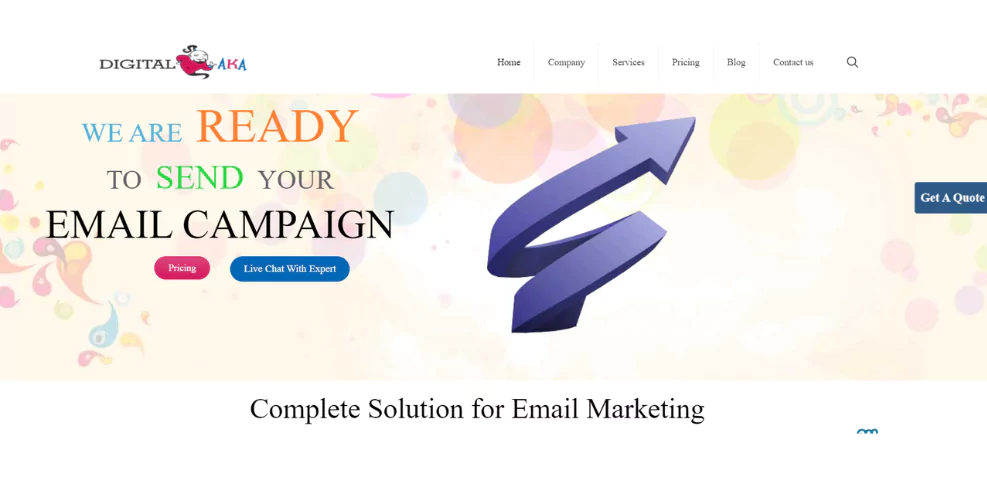
- Ideal for both cold and warm email outreach
- Robust SMTP servers ensure fast and secure delivery
- Real-time email tracking with detailed analytics
- 24/7 customer support and top-notch security
- Perfect for startups, agencies, and enterprises
2. Mailshake
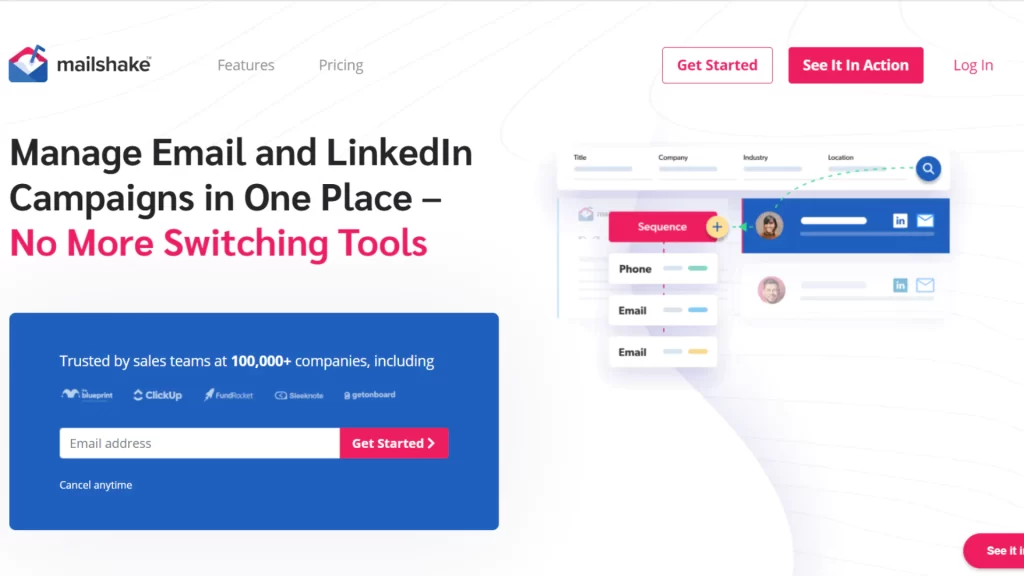
- Designed for cold email campaigns
- Easy-to-use templates and automated follow-ups
- Connects with Gmail and Outlook
- Best for sales teams and lead generation
3. iDealSMTP
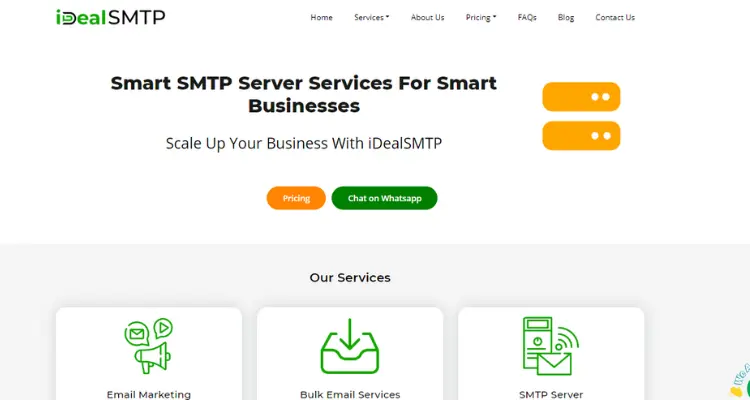
- Strong personalization features for warm emails
- AI-powered tools to improve open rates
- Built-in CRM for contact management
- Ideal for freelancers and growing teams
4. Woodpecker
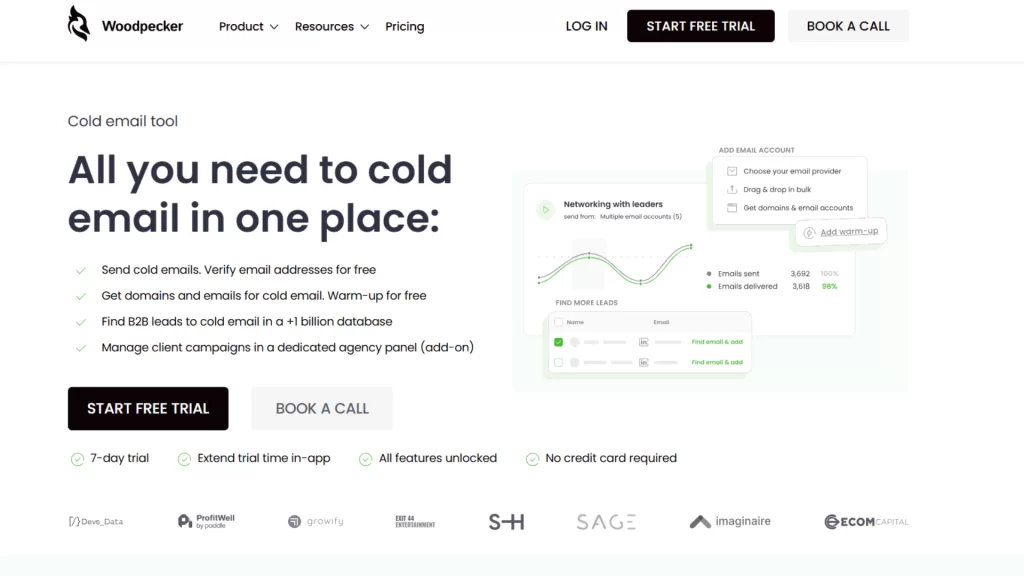
- Focused on B2B cold email outreach
- Smart email sequence builder
- Tracks replies and schedules follow-ups
- Integrates with many CRM tools
5. SMTPget
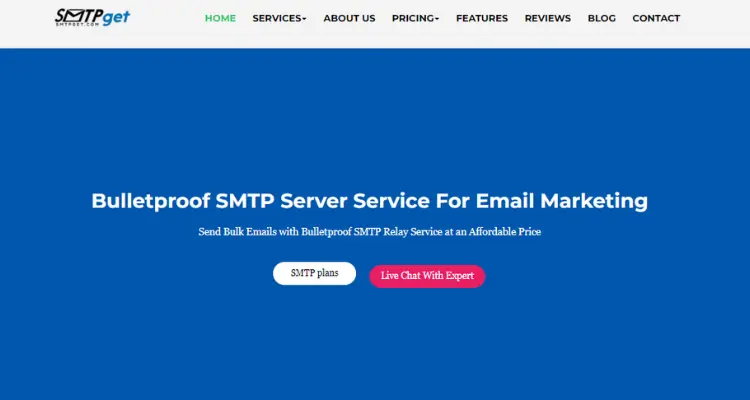
- Perfect for cold and warm email outreach
- Powerful SMTP servers for fast and safe delivery
- Real-time email tracking and analytics
- 24/7 support with strong security features
- Great for startups, agencies, and large businesses
6. GMass
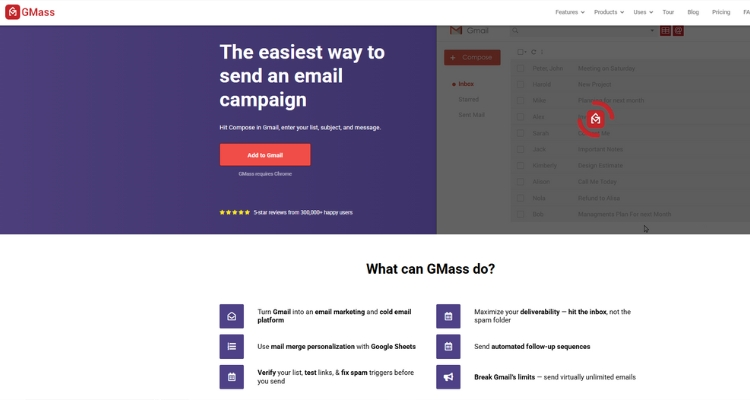
- Works directly in Gmail
- Great for both cold and warm emails
- Sends bulk emails with personalized content
- Very popular among marketers and small businesses
Conclusion:
Choosing the right email strategy is crucial for the success of your business. Whether you’re using cold emails to reach new leads or warm emails to nurture existing relationships, each approach has its benefits. Cold emails are great for starting conversations with potential clients, while warm emails help you maintain and strengthen connections with people who are already familiar with your brand.
To make the most of your email outreach, it’s important to select the right tools and service providers. These Email Marketing Services can help you personalize your messages, automate follow-ups, and track your results, saving you time and boosting your efficiency.
Ultimately, the key is understanding your goals and audience. By choosing the right email strategy and tools, you can improve engagement, increase conversions, and grow your business. Take the time to refine your approach and see the positive impact it has on your success.
FAQ
What’s the difference between cold and warm emails?
Cold emails are sent to people you’ve never contacted before, while warm emails are sent to people who already know your brand or have interacted with you before.
When should I use cold emails for my business?
Cold emails are best used when reaching out to new prospects or potential clients. They help you present your business, provide useful information, and begin a conversation with someone who hasn’t heard of you before.
When should I use warm emails for my business?
Warm emails are ideal for following up with existing leads, current customers, or people who have shown interest in your business. They help build and strengthen relationships.
How can email outreach help grow my business?
Email outreach allows you to connect with a larger audience, nurture relationships, and drive conversions. By using the right strategy, you can increase engagement and sales opportunities.
What tools should I use for email outreach?
Tools like SMTPget, Digitalaka, and other email service providers can help you manage campaigns, track results, automate follow-ups, and ensure your emails reach the inbox, not the spam folder.
How do I improve my email response rates?
Personalizing your emails, creating engaging subject lines, and sending targeted messages are key to improving response rates. Additionally, using follow-up automation helps you stay on top of replies.
How do I measure the success of my email outreach campaigns?
Use email tracking tools to monitor open rates, click rates, and reply rates. This data helps you assess which strategies are working and where improvements are needed.
Can email outreach work for both small businesses and large companies?
Yes, email outreach is effective for businesses of all sizes. With the right strategy and tools, both startups and large businesses can benefit from cold and warm email outreach.

